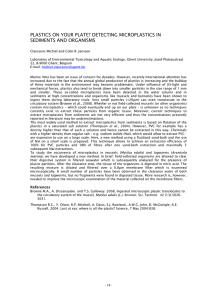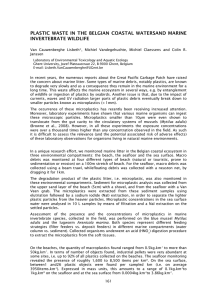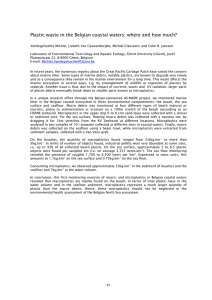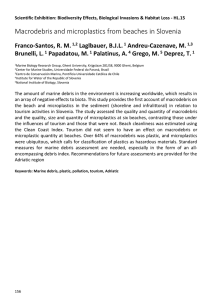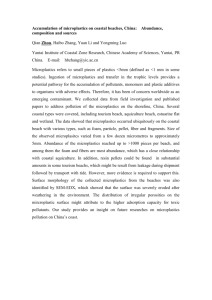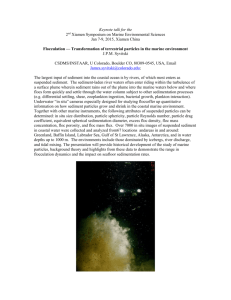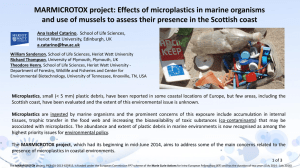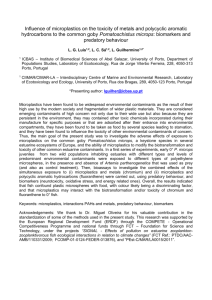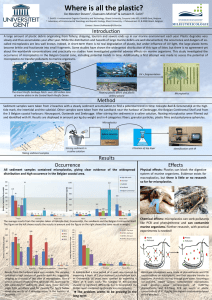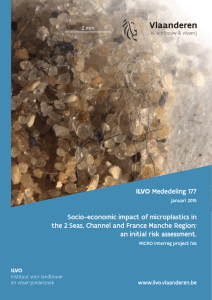Mytilus edulis Arenicola marina
advertisement
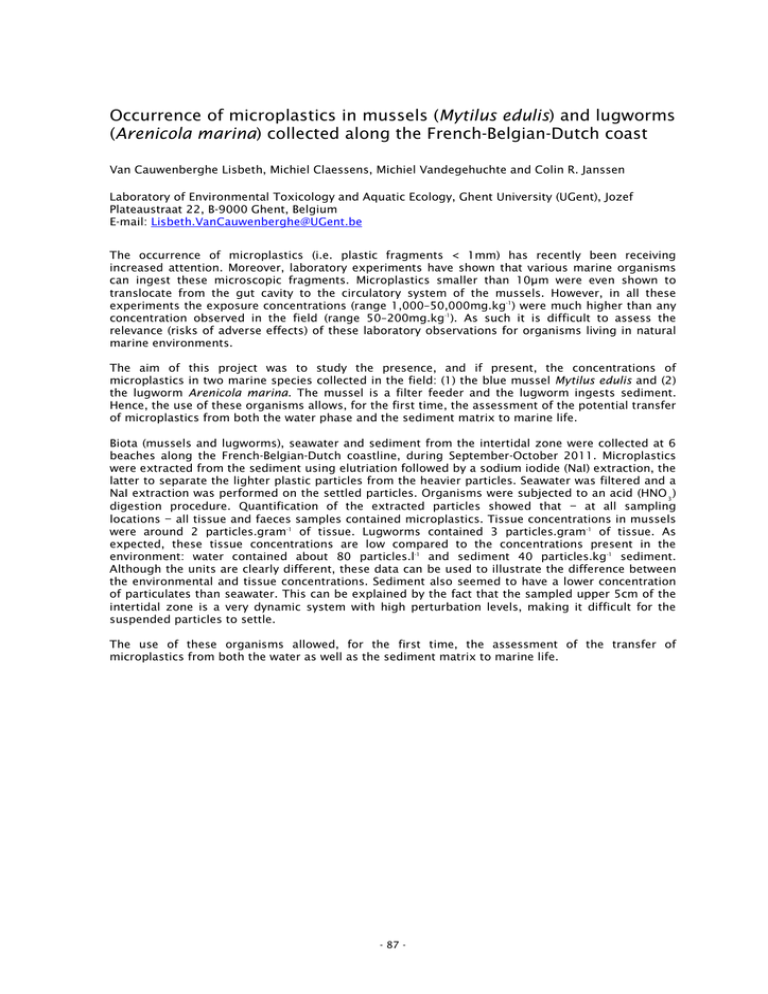
Occurrence of microplastics in mussels (Mytilus edulis) and lugworms (Arenicola marina) collected along the French-Belgian-Dutch coast Van Cauwenberghe Lisbeth, Michiel Claessens, Michiel Vandegehuchte and Colin R. Janssen Laboratory of Environmental Toxicology and Aquatic Ecology, Ghent University (UGent), Jozef Plateaustraat 22, B-9000 Ghent, Belgium E-mail: Lisbeth.VanCauwenberghe@UGent.be The occurrence of microplastics (i.e. plastic fragments < 1mm) has recently been receiving increased attention. Moreover, laboratory experiments have shown that various marine organisms can ingest these microscopic fragments. Microplastics smaller than 10μm were even shown to translocate from the gut cavity to the circulatory system of the mussels. However, in all these experiments the exposure concentrations (range 1,000–50,000mg.kg-1) were much higher than any concentration observed in the field (range 50–200mg.kg-1). As such it is difficult to assess the relevance (risks of adverse effects) of these laboratory observations for organisms living in natural marine environments. The aim of this project was to study the presence, and if present, the concentrations of microplastics in two marine species collected in the field: (1) the blue mussel Mytilus edulis and (2) the lugworm Arenicola marina. The mussel is a filter feeder and the lugworm ingests sediment. Hence, the use of these organisms allows, for the first time, the assessment of the potential transfer of microplastics from both the water phase and the sediment matrix to marine life. Biota (mussels and lugworms), seawater and sediment from the intertidal zone were collected at 6 beaches along the French-Belgian-Dutch coastline, during September-October 2011. Microplastics were extracted from the sediment using elutriation followed by a sodium iodide (NaI) extraction, the latter to separate the lighter plastic particles from the heavier particles. Seawater was filtered and a NaI extraction was performed on the settled particles. Organisms were subjected to an acid (HNO 3 ) digestion procedure. Quantification of the extracted particles showed that − at all sampling locations − all tissue and faeces samples contained microplastics. Tissue concentrations in mussels were around 2 particles.gram-1 of tissue. Lugworms contained 3 particles.gram-1 of tissue. As expected, these tissue concentrations are low compared to the concentrations present in the environment: water contained about 80 particles.l-1 and sediment 40 particles.kg-1 sediment. Although the units are clearly different, these data can be used to illustrate the difference between the environmental and tissue concentrations. Sediment also seemed to have a lower concentration of particulates than seawater. This can be explained by the fact that the sampled upper 5cm of the intertidal zone is a very dynamic system with high perturbation levels, making it difficult for the suspended particles to settle. The use of these organisms allowed, for the first time, the assessment of the transfer of microplastics from both the water as well as the sediment matrix to marine life. - 87 -
